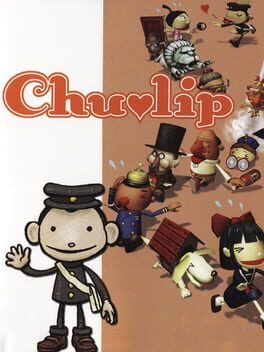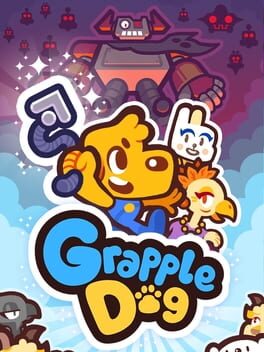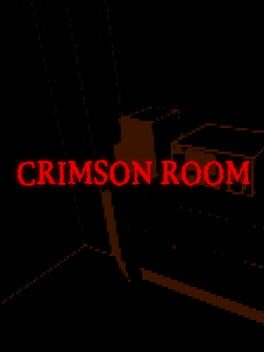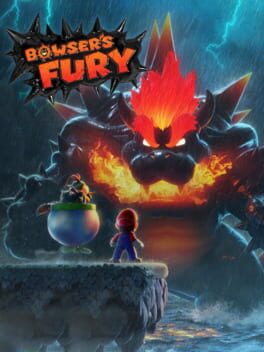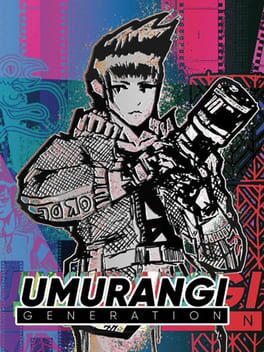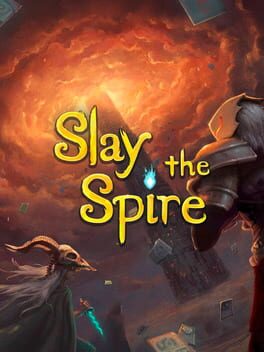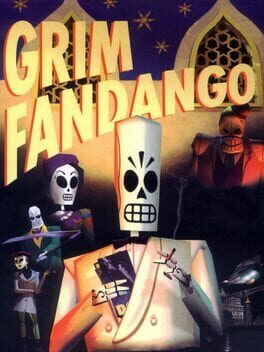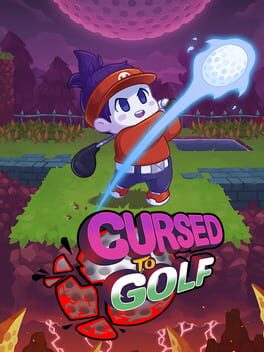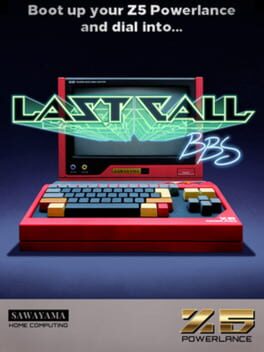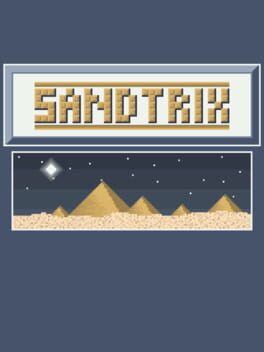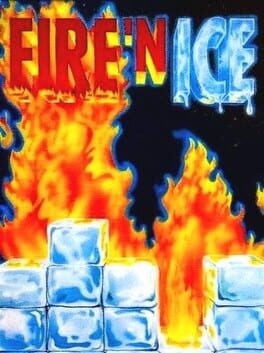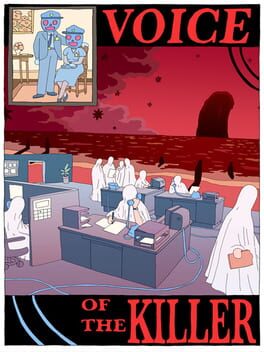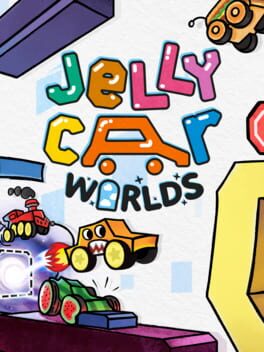tendog
BACKER
2019
Your enjoyment is proportional with how much time you invest in it. The more you soak in to the depths of the content (which there is a pretty huge amount of!), the more the story will really strike you. I loved the creativity and free-spirit feeling of this game, everything had a really personal touch from a variety of folks so it actually felt like an internet space. Such a cool concept, and so awesome to see it done right.
2002
First and foremost:
If you want to play this game without any external help (like I did), you can totally do it. Don't let other people tell you this game is ridiculously obtuse, it's really not. However, the English translation omitted a single line that does make one part basically impossible without lots of random guessing. I promise it won't spoil the experience, but in case you don't want to see it, I advise you stop reading here.
The one thing the English translation omits that makes an unguided playthrough extremely annoying is "Dempou Soccer". That's it. More specifically, a computer should say "Dempou Soccer" on its screen. That's enough for you to complete the game now. Have fun.
By the way, if you play on emulator, I recommend allowing yourself to use savestates BUT ONLY after first experiencing the game for a few hours. Abusing them will diminish the experience, but some bits of this game are easy to fail and agonizingly slow to return to to try again.
I think the devs must have known how brutal each mis-step could be, and if one chose to avoid the consequences of a mis-step by save-scumming, how meticulously boring and tedious it would be to head to a save location, save, quit, and reload the game. On the GAME OVER screen, your twitching, heartbroken body routinely gets kicked by one of the teachers, followed by them walking away and leaving you there in the dust. It's a pretty accurate summary of how this game treats the player at times.
However, Chulip is a genuinely wonderful game. Like Backseat Gamer said in his analysis video of the game, Chulip is (probably accidentally) a great detective game. And unlike most of the most popular detective games, there is so much information to learn that won't help you progress, but will enrich your experience. The characters become more than NPCs, they become more like people, with their own lives and own problems and own passions. And you will want to understand them and you will want to help them and it's easier to forgive them for the way they act towards you at first.
One-year-later addendum:
Chulip embodies the Shabby Life. The rough life. Living with what money you got, if you got any. Getting by how you can. And looking at love as a way to escape it all. A fascinatingly unique game, that many imitators have attempted to emulate but haven't quite hit the mark yet (as far as I'm aware!).
If you want to play this game without any external help (like I did), you can totally do it. Don't let other people tell you this game is ridiculously obtuse, it's really not. However, the English translation omitted a single line that does make one part basically impossible without lots of random guessing. I promise it won't spoil the experience, but in case you don't want to see it, I advise you stop reading here.
The one thing the English translation omits that makes an unguided playthrough extremely annoying is "Dempou Soccer". That's it. More specifically, a computer should say "Dempou Soccer" on its screen. That's enough for you to complete the game now. Have fun.
By the way, if you play on emulator, I recommend allowing yourself to use savestates BUT ONLY after first experiencing the game for a few hours. Abusing them will diminish the experience, but some bits of this game are easy to fail and agonizingly slow to return to to try again.
I think the devs must have known how brutal each mis-step could be, and if one chose to avoid the consequences of a mis-step by save-scumming, how meticulously boring and tedious it would be to head to a save location, save, quit, and reload the game. On the GAME OVER screen, your twitching, heartbroken body routinely gets kicked by one of the teachers, followed by them walking away and leaving you there in the dust. It's a pretty accurate summary of how this game treats the player at times.
However, Chulip is a genuinely wonderful game. Like Backseat Gamer said in his analysis video of the game, Chulip is (probably accidentally) a great detective game. And unlike most of the most popular detective games, there is so much information to learn that won't help you progress, but will enrich your experience. The characters become more than NPCs, they become more like people, with their own lives and own problems and own passions. And you will want to understand them and you will want to help them and it's easier to forgive them for the way they act towards you at first.
One-year-later addendum:
Chulip embodies the Shabby Life. The rough life. Living with what money you got, if you got any. Getting by how you can. And looking at love as a way to escape it all. A fascinatingly unique game, that many imitators have attempted to emulate but haven't quite hit the mark yet (as far as I'm aware!).
2022
Grapple Dog is polished to a sparkle. It's really a blast to play, it just instantly feels fun, and the level design is effortlessly intuitive. The pixel art is SO CLEAN too, it's kind of mesmerizing.
My biggest issues with the game lay with the gameplay itself. I've seen some other comments mentioning the motion feeling off somehow, but honestly I got used to it as the game went, although specifically when Pablo is in his rolled-up ball animation, he really does tend to fly around at the touch of a button and becomes way too hard to control precisely, which is sometimes required. My bigger issue was with the grappling hook, which unfortunately is kind of the core of the game.
The grappling hook has three angles: up, up-left, and up-right. I don't think this ever felt right. It forces you to make shots at weird angles when you'd rather just tilt it a bit more this way or that way. This is one of those things that's not really meaningful to someone who hasn't played the game, so I'll leave it at that.
One other major game design issue that I'm still confused about: checkpoints don't work like they do in... every other game. And by that I mean, if you touch a checkpoint, it doesn't save your progress, and it doesn't heal you. It only works once. This sounds like a little nitpick, but it seriously messed with my playthrough several times in ways that made me restart a level when I was 80% done with it. This is because if you hit a checkpoint, then go back and collect some gems or fruits, if you die before hitting another checkpoint, you have to redo it all. Even worse, the level might block you from going back after you die because certain gates will reset. It's also just frustrating to lose health right next to a checkpoint and instead of being able to quickly touch it and get going once again, I would often just die on purpose or open the menu to restart at the checkpoint, which just felt so unnecessary. Very odd choice that I saw no benefit from.
Other than some gameplay flaws, it's a really, really solid platformer that is so easy to get into and hardly needs any carrots-on-sticks to get you playing more.
My biggest issues with the game lay with the gameplay itself. I've seen some other comments mentioning the motion feeling off somehow, but honestly I got used to it as the game went, although specifically when Pablo is in his rolled-up ball animation, he really does tend to fly around at the touch of a button and becomes way too hard to control precisely, which is sometimes required. My bigger issue was with the grappling hook, which unfortunately is kind of the core of the game.
The grappling hook has three angles: up, up-left, and up-right. I don't think this ever felt right. It forces you to make shots at weird angles when you'd rather just tilt it a bit more this way or that way. This is one of those things that's not really meaningful to someone who hasn't played the game, so I'll leave it at that.
One other major game design issue that I'm still confused about: checkpoints don't work like they do in... every other game. And by that I mean, if you touch a checkpoint, it doesn't save your progress, and it doesn't heal you. It only works once. This sounds like a little nitpick, but it seriously messed with my playthrough several times in ways that made me restart a level when I was 80% done with it. This is because if you hit a checkpoint, then go back and collect some gems or fruits, if you die before hitting another checkpoint, you have to redo it all. Even worse, the level might block you from going back after you die because certain gates will reset. It's also just frustrating to lose health right next to a checkpoint and instead of being able to quickly touch it and get going once again, I would often just die on purpose or open the menu to restart at the checkpoint, which just felt so unnecessary. Very odd choice that I saw no benefit from.
Other than some gameplay flaws, it's a really, really solid platformer that is so easy to get into and hardly needs any carrots-on-sticks to get you playing more.
2004
Ever played one of those escape rooms with friends/family in some weird building downtown? Or maybe you saw the movie, Escape Room? Or maybe you've played Escape Simulator? There is a direct chain of influence from all of those that trace back to Crimson Room. Takao Kato, creator of the what is considered the first real escape room in 2007, cited Crimson Room as the inspiration.
Kato easily could have been inspired by countless other online escape room games. Escape room games were hugely popular in the mid-2000s, and they have generally been claimed as the source of inspiration for real world escape room designers internationally. But practically any 3D single-room escape game that you can think of came after Crimson Room, and was in fact a result of the boom in popularity of Crimson Room. The oldest post on Jayisgames tagged under "escape", before they even began their 300+ part long "Weekday Escape" series, is for Viridian Room, the sequel to Crimson Room, which was released just a couple of months after the first.
The game doesn't play well anymore. It's annoyingly specific in where it wants you to click, and it's really short. But there was nothing quite like it before it existed, and it established a cross-media genre and inspired real life events that are popular internationally. Not bad for a flash game.
If you want to play Takagism's escape games, check out this cool fan-made recreation of the original fasco-csc site: http://www.fasco-cs.net/
Kato easily could have been inspired by countless other online escape room games. Escape room games were hugely popular in the mid-2000s, and they have generally been claimed as the source of inspiration for real world escape room designers internationally. But practically any 3D single-room escape game that you can think of came after Crimson Room, and was in fact a result of the boom in popularity of Crimson Room. The oldest post on Jayisgames tagged under "escape", before they even began their 300+ part long "Weekday Escape" series, is for Viridian Room, the sequel to Crimson Room, which was released just a couple of months after the first.
The game doesn't play well anymore. It's annoyingly specific in where it wants you to click, and it's really short. But there was nothing quite like it before it existed, and it established a cross-media genre and inspired real life events that are popular internationally. Not bad for a flash game.
If you want to play Takagism's escape games, check out this cool fan-made recreation of the original fasco-csc site: http://www.fasco-cs.net/
2021
Other than ToTK, it's been a while since I've played a first party, main-line Nintendo game and nearly forgot how insanely polished and refined the gameplay can be. Despite the vast ocean area, it's nigh on impossible to find yourself lost. Despite it being fairly easy to fall back down to ocean-level while climbing the islands, you will always land next to something that will pick the gameplay right back up. Mainline Marios are magically crafted, and I really do mean that. They are Disney movies in game form (in the best way possible).
That being said, there are some points of failure that drag the gameplay. Bowser always seemed to spawn at the worst times for me, and I started to wonder if there really is a good time for Bowser to spawn. At any given moment, I'd be part-way into a Cat Shine mission, and I would just feel annoyed that Bowser was going to interrupt the fun challenge with his shitstorm making bullshit flying everywhere. Alternatively, I'd be moments away from collecting the Cat Shine and he'd just turn around and leave just as soon as he walked in. To add onto this pain, when I actually did want him to spawn so I could destroy some blocks, I'd find myself sitting on my hands, too afraid that if I started wandering off, I'd get distracted with another Cat Shine mission and leave the vicinity of the blocks. Just like the Blood Moons in BotW/TotK, they never happen at the right time and just feel like a needless interruption. I'm not a fan of either mechanic.
One silver lining to this is towards the end of your run to 50 shines, Bowser is suddenly undeterred by any additional shines and won't leave until you fight him in super bell mode. It was a pleasant surprise when I realized I was going to have to collect more shines during Bowser's shitstorm whether I liked it or not. It was no longer an interruption, it was a hard-mode-esque challenge, and I very quickly went from "oh, great" to "oh... great!!".
It is very silly to package a game as wonderful as this in a bundle with a game most Nintendo fans have already relatively recently played. It is silly to force some of 3D world's otherwise sensible mechanics into an open-world Mario game (one-hit kills like lava are no fun at all). However, this game is still sheer joy and despite everything, I found myself lost in the world of Nintendo's iconic charm.
That being said, there are some points of failure that drag the gameplay. Bowser always seemed to spawn at the worst times for me, and I started to wonder if there really is a good time for Bowser to spawn. At any given moment, I'd be part-way into a Cat Shine mission, and I would just feel annoyed that Bowser was going to interrupt the fun challenge with his shitstorm making bullshit flying everywhere. Alternatively, I'd be moments away from collecting the Cat Shine and he'd just turn around and leave just as soon as he walked in. To add onto this pain, when I actually did want him to spawn so I could destroy some blocks, I'd find myself sitting on my hands, too afraid that if I started wandering off, I'd get distracted with another Cat Shine mission and leave the vicinity of the blocks. Just like the Blood Moons in BotW/TotK, they never happen at the right time and just feel like a needless interruption. I'm not a fan of either mechanic.
One silver lining to this is towards the end of your run to 50 shines, Bowser is suddenly undeterred by any additional shines and won't leave until you fight him in super bell mode. It was a pleasant surprise when I realized I was going to have to collect more shines during Bowser's shitstorm whether I liked it or not. It was no longer an interruption, it was a hard-mode-esque challenge, and I very quickly went from "oh, great" to "oh... great!!".
It is very silly to package a game as wonderful as this in a bundle with a game most Nintendo fans have already relatively recently played. It is silly to force some of 3D world's otherwise sensible mechanics into an open-world Mario game (one-hit kills like lava are no fun at all). However, this game is still sheer joy and despite everything, I found myself lost in the world of Nintendo's iconic charm.
2020
2019
A remarkably balanced, well paced, and replayable card game. God it feels so good to build a strategy out of all of the weird relics and cards you end up with through the run. I don't think I've replayed what is essentially the same game this many times and never once felt bored. I think StS hit the sweet spot in run length and difficulty curve. It's so easy to pick it up, give the spire another shot, and put it down whether it's a victory or a loss. And somehow out of dozens of failed attempts with what seemed like miraculously perfect decks, I never felt demotivated starting back at square 1.
1998
This was a fun one to finally get around playing!
It's a game that I always knew about, without knowing anything about it, which was a great way to dive into it, actually. The game opened up slow, but found its footing in the second act where it really dazzled. The Art Deco/Aztec fusion (Azteco) is so unique and so wonderfully created. GF chooses to show the player its world through backdoors and hushed rooms instead of the lavish settings which are only presented in glimpses of distant lights and parades, and somehow, instead of feeling like a grandiose world was being hidden away, it felt like the hidden world was where all the excitement was anyway.
There were some sore spots. Moving Manny is like operating a tank. Walls seem to reflect movement in really awkward ways that can make entering small doorways a pain. Manny tended to get stuck in odd corners, forcing me to reload some saves and learn the hard way that I should save more often than I would want. A few of the required actions were indicated quite badly. There were 3 occasions in total where I went to look up a guide instead of repeatedly trying all of my items in all of the places I could. One of them I think I rushed to the guide prematurely, but the other 2 felt unfair. In one of them, the game literally told me "no you can't do that on a ladder" when it was exactly what I needed to do... on a different ladder. Frustrating!
However, for the most part, I liked the "puzzles"/detective work required to get through each section. I was having the most fun when I had plenty of goals to accomplish in Rubacava and had moments of epiphany while thinking and wandering the night. If you look for it, in 90% of the cases, the game really tries to lead you towards the answer without being boring and having Manny go "hey maybe I should use x on y". Sometimes, using the right item in the wrong place/person even provided a useful hint.
side rant... It's typical to see complaints about the obtuseness of puzzles in 90s PC adventure games, but I think a lot of those come from a place of impatience. You are supposed to get stuck at first! If you instantly knew what to do at every point, why make the game a game at all? Let your mind stew sometimes... it can be rewarding. ok, end rant.
The dialogue, voice acting, and the inventive use of dialogue choices really gave the game a charm. Each character had their own personality, goals, desires, shortcomings; every character felt real. The writing was superb. I tried not to miss a single line of dialogue if I could help it, because it infallibly led to a gag, a callback, some extra insight, or whatever else Tim Schaefer had in store. Really, what a delight!
It's a game that I always knew about, without knowing anything about it, which was a great way to dive into it, actually. The game opened up slow, but found its footing in the second act where it really dazzled. The Art Deco/Aztec fusion (
There were some sore spots. Moving Manny is like operating a tank. Walls seem to reflect movement in really awkward ways that can make entering small doorways a pain. Manny tended to get stuck in odd corners, forcing me to reload some saves and learn the hard way that I should save more often than I would want. A few of the required actions were indicated quite badly. There were 3 occasions in total where I went to look up a guide instead of repeatedly trying all of my items in all of the places I could. One of them I think I rushed to the guide prematurely, but the other 2 felt unfair. In one of them, the game literally told me "no you can't do that on a ladder" when it was exactly what I needed to do... on a different ladder. Frustrating!
However, for the most part, I liked the "puzzles"/detective work required to get through each section. I was having the most fun when I had plenty of goals to accomplish in Rubacava and had moments of epiphany while thinking and wandering the night. If you look for it, in 90% of the cases, the game really tries to lead you towards the answer without being boring and having Manny go "hey maybe I should use x on y". Sometimes, using the right item in the wrong place/person even provided a useful hint.
side rant... It's typical to see complaints about the obtuseness of puzzles in 90s PC adventure games, but I think a lot of those come from a place of impatience. You are supposed to get stuck at first! If you instantly knew what to do at every point, why make the game a game at all? Let your mind stew sometimes... it can be rewarding. ok, end rant.
The dialogue, voice acting, and the inventive use of dialogue choices really gave the game a charm. Each character had their own personality, goals, desires, shortcomings; every character felt real. The writing was superb. I tried not to miss a single line of dialogue if I could help it, because it infallibly led to a gag, a callback, some extra insight, or whatever else Tim Schaefer had in store. Really, what a delight!
2022
Yeah it's alright!
I managed to beat it on my first run, which I'm okay with. It definitely wasn't easy, and probably having had played the demo made that a little more possible. Took about 6 hours total to complete.
I don't know if I just somehow missed it, but I didn't find out about spin until pretty late in the game, when I saw it on the controls menu. It's pretty crucial in the late game so I'm glad I came across it when I did.
This game is purportedly a rogue-like, but it doesn't do much to encourage multiple runs after you've beaten it, and in fact it might be discouraging to get sent straight back to the start without having much to show for it. I played Slay the Spire earlier this year, so the bar was set pretty high for rogue-likes, but even then, there are some basic elements I would've liked to see, such as having to choose between awards from trophies, more randomization/paths, outfits being special rewards and not just attained incrementally after beating bosses.
It would've been cool if the outfits had benefits/drawbacks. You only get the chance to change them at each shop, so it seems like the perfect opportunity for that. Imagine if the Spicy outfit made every ball inflamed, but also made it so you could never use frost, and vice-versa with the Frozen outfit. I can easily think up a bunch more, but already that sounds like it would add more strategy and planning.
Golf-rogue-like is a really clever idea for a game, and it was kinda well executed, but kinda unambitious too. I still had a lot of fun, anyways.
I managed to beat it on my first run, which I'm okay with. It definitely wasn't easy, and probably having had played the demo made that a little more possible. Took about 6 hours total to complete.
I don't know if I just somehow missed it, but I didn't find out about spin until pretty late in the game, when I saw it on the controls menu. It's pretty crucial in the late game so I'm glad I came across it when I did.
This game is purportedly a rogue-like, but it doesn't do much to encourage multiple runs after you've beaten it, and in fact it might be discouraging to get sent straight back to the start without having much to show for it. I played Slay the Spire earlier this year, so the bar was set pretty high for rogue-likes, but even then, there are some basic elements I would've liked to see, such as having to choose between awards from trophies, more randomization/paths, outfits being special rewards and not just attained incrementally after beating bosses.
It would've been cool if the outfits had benefits/drawbacks. You only get the chance to change them at each shop, so it seems like the perfect opportunity for that. Imagine if the Spicy outfit made every ball inflamed, but also made it so you could never use frost, and vice-versa with the Frozen outfit. I can easily think up a bunch more, but already that sounds like it would add more strategy and planning.
Golf-rogue-like is a really clever idea for a game, and it was kinda well executed, but kinda unambitious too. I still had a lot of fun, anyways.
2022
Like many a Zachtronics game before, Last Call BBS has that secret ingredient to create a great puzzle format: arbitrary limitation.
Perhaps intentionally, the computer you are using only has enough disk space to download 7 programs, most of which have their own limitation. For ChipWizard and Food Court, the limit was simply workspace, a pretty common trope for Zachtronics, although for Food Court there are two ways space is restricted. For X'BPGH, interestingly, it was time (as displayed through stages of growth). There was also an instruction limit, but I don't think I ever ran out of space for instructions.
For the others, there might not be any clear limitation. Kabufuda cards existed before Last Call BBS, but I don't know if Kabufuda Solitaire existed. The free spaces certainly had increasing limits with higher difficulty. Dungeons & Diagrams had restrictions for block placement, but that's not really unusual for a logic puzzle (in fact a lot of the rules carry over from a logic puzzle known as Tapa). Steed Force could be considered to have a quite limited variety of tools for painting Gundam-like figures. HACKMATCH might not even qualify.
I'd be remiss not to mention some of these games had their first appearance in a previous Zachtronics game. A nearly identical version of Kabufuda Solitaire was present in Eliza. A fairly similar version of HACKMATCH in EXAPUNKS. ChipWizard's first incarnation was KOHCTPYKTOP, released all the way back in 2009 as a flash game. There may be others that I don't know about.
And I think the narrative that played out through memos from the relative who had donated the Z5 Powerlance to the player hints towards a past where arbitrary restrictions were not an option, they were reality. Graphics were limited to smaller resolutions, smaller budgets, smaller memory allocation, and smaller, closer-knit (more closely knit?) communities who came together to play these games and just chat.
The world's a lot bigger than it was when Zachtronics began. Things move faster. LC makes you wait when downloading a game, although the files of the game were all loaded up upon booting up Last Call BBS on Steam. It might've taken you less time to download LC than it took to download any game within it.
I don't think Zach Barth was trying to communicate there is no place for Zachtronics anymore, or that he was out of ideas. I think he just had a good idea of where he wanted to stop.
Perhaps intentionally, the computer you are using only has enough disk space to download 7 programs, most of which have their own limitation. For ChipWizard and Food Court, the limit was simply workspace, a pretty common trope for Zachtronics, although for Food Court there are two ways space is restricted. For X'BPGH, interestingly, it was time (as displayed through stages of growth). There was also an instruction limit, but I don't think I ever ran out of space for instructions.
For the others, there might not be any clear limitation. Kabufuda cards existed before Last Call BBS, but I don't know if Kabufuda Solitaire existed. The free spaces certainly had increasing limits with higher difficulty. Dungeons & Diagrams had restrictions for block placement, but that's not really unusual for a logic puzzle (in fact a lot of the rules carry over from a logic puzzle known as Tapa). Steed Force could be considered to have a quite limited variety of tools for painting Gundam-like figures. HACKMATCH might not even qualify.
I'd be remiss not to mention some of these games had their first appearance in a previous Zachtronics game. A nearly identical version of Kabufuda Solitaire was present in Eliza. A fairly similar version of HACKMATCH in EXAPUNKS. ChipWizard's first incarnation was KOHCTPYKTOP, released all the way back in 2009 as a flash game. There may be others that I don't know about.
And I think the narrative that played out through memos from the relative who had donated the Z5 Powerlance to the player hints towards a past where arbitrary restrictions were not an option, they were reality. Graphics were limited to smaller resolutions, smaller budgets, smaller memory allocation, and smaller, closer-knit (more closely knit?) communities who came together to play these games and just chat.
The world's a lot bigger than it was when Zachtronics began. Things move faster. LC makes you wait when downloading a game, although the files of the game were all loaded up upon booting up Last Call BBS on Steam. It might've taken you less time to download LC than it took to download any game within it.
I don't think Zach Barth was trying to communicate there is no place for Zachtronics anymore, or that he was out of ideas. I think he just had a good idea of where he wanted to stop.
2023
edit: apparently literally hours after i posted this review, Tetris Holding LLC took down setris but it's still available on archive.org: https://archive.org/details/setris-1.2
if that link goes down hmu on discord i gotchu
I am and always have been quite bad at Tetris but DAMN
Immensely satisfying physics, sounds, and screen shake, but with some gameplay tweaking this could really shine. I think part of the problem is the sand falls slower than the pieces do as soon as you go up a level in difficulty, which essentially makes it impossible to catch up past a certain height. Also, it sometimes feels like there are too many colors, maybe 3 instead of 4 would feel better at harder difficulties? And of course, probably don't need to have actual tetronimos as pieces, though it works surprisingly well!
if that link goes down hmu on discord i gotchu
I am and always have been quite bad at Tetris but DAMN
Immensely satisfying physics, sounds, and screen shake, but with some gameplay tweaking this could really shine. I think part of the problem is the sand falls slower than the pieces do as soon as you go up a level in difficulty, which essentially makes it impossible to catch up past a certain height. Also, it sometimes feels like there are too many colors, maybe 3 instead of 4 would feel better at harder difficulties? And of course, probably don't need to have actual tetronimos as pieces, though it works surprisingly well!
1992
a LOVELY puzzle game, oh wow. This game has changed my perspective on how good a NES game could be.
The devs found a simple mechanic (the ice wand) and never wavered from it. It allowed for so many clever puzzles with only one new twist every world or two. The way they introduced the mechanics was perfect, forcing you to run into the scenario that teaches you how a new piece of the puzzle works before sending you off to solve the rest of the world on your own. And you can skip around to any (non-boss) puzzle in ANY world, anytime you want! I can't believe how much this game got right, all the way back in 1992. Even the boss levels, with moving elements, were remarkably well-done, if somewhat repetitive.
Round 7-2 is perhaps one of the best puzzles in the whole game. Knowing it was possible, knowing there was no jank, made it so fun to figure out and so rewarding to get the solution.
The spritework is cute and awesome. The cutscenes and story were unexpected but welcome. There was a new song for each world and they were all bangers.
This game even has a level editor! I mean come on, this has to be one of the most impressive puzzle titles for the NES. What an absolute masterpiece.
The devs found a simple mechanic (the ice wand) and never wavered from it. It allowed for so many clever puzzles with only one new twist every world or two. The way they introduced the mechanics was perfect, forcing you to run into the scenario that teaches you how a new piece of the puzzle works before sending you off to solve the rest of the world on your own. And you can skip around to any (non-boss) puzzle in ANY world, anytime you want! I can't believe how much this game got right, all the way back in 1992. Even the boss levels, with moving elements, were remarkably well-done, if somewhat repetitive.
Round 7-2 is perhaps one of the best puzzles in the whole game. Knowing it was possible, knowing there was no jank, made it so fun to figure out and so rewarding to get the solution.
The spritework is cute and awesome. The cutscenes and story were unexpected but welcome. There was a new song for each world and they were all bangers.
This game even has a level editor! I mean come on, this has to be one of the most impressive puzzle titles for the NES. What an absolute masterpiece.
2020
2013
Something magical happened with Blek.
For starters: Blek is a puzzle game with a mechanic that could only really be done on a touchscreen: the exact motion of the line you draw out is repeated over and over, and the goal is to use that repetition to collect pellets in the level while avoiding obstacles. It's so simple and so well suited to a touchscreen, and it makes a genuinely great mobile puzzle game on its own.
Now the magical bit: the game is broken. Some of the levels don't display properly on modern screens, which occasionally makes the intended solution impossible. For example, in the hint for level 60, there is an indicator suggesting you draw a portal - which is something you can do btw, game never lets you know that outside of hints lol - draw the portal OUTSIDE of the screen. You can just see the edge of the indicator.
Now with some games, this breaks them. In our screen filled hellscape I think everyone has experienced something only partially displaying onscreen, making it untouchable. But miraculously, for Blek, this invites for some truly clever innovation. If you look up Level 60 solutions on YouTube (like I did once hitting this roadblock), you will find tons of different approaches: reversing the motion of the line by bouncing off the wall, then entering the portal, drawing an extra long portion to reach over to where the portal would have come out, some strange worm-thing that inches back and forth, deftly wrapping around obstacles. It's BEAUTIFUL. And sometimes this happens naturally in the game, and the game is totally cool with it. To see it happen mistakenly and have players to overcome the odds and come up with new approaches, that's magical. It's so uncommon for a puzzle game to allow for this much variety in solutions and it's wonderfully refreshing. This game doesn't feel a day old.
So Blek devs, please never fix your game, I love it as it is.
For starters: Blek is a puzzle game with a mechanic that could only really be done on a touchscreen: the exact motion of the line you draw out is repeated over and over, and the goal is to use that repetition to collect pellets in the level while avoiding obstacles. It's so simple and so well suited to a touchscreen, and it makes a genuinely great mobile puzzle game on its own.
Now the magical bit: the game is broken. Some of the levels don't display properly on modern screens, which occasionally makes the intended solution impossible. For example, in the hint for level 60, there is an indicator suggesting you draw a portal - which is something you can do btw, game never lets you know that outside of hints lol - draw the portal OUTSIDE of the screen. You can just see the edge of the indicator.
Now with some games, this breaks them. In our screen filled hellscape I think everyone has experienced something only partially displaying onscreen, making it untouchable. But miraculously, for Blek, this invites for some truly clever innovation. If you look up Level 60 solutions on YouTube (like I did once hitting this roadblock), you will find tons of different approaches: reversing the motion of the line by bouncing off the wall, then entering the portal, drawing an extra long portion to reach over to where the portal would have come out, some strange worm-thing that inches back and forth, deftly wrapping around obstacles. It's BEAUTIFUL. And sometimes this happens naturally in the game, and the game is totally cool with it. To see it happen mistakenly and have players to overcome the odds and come up with new approaches, that's magical. It's so uncommon for a puzzle game to allow for this much variety in solutions and it's wonderfully refreshing. This game doesn't feel a day old.
So Blek devs, please never fix your game, I love it as it is.
2022
Playing JellyCar Worlds, it feels like no time has passed at all since the original game I used to play practically daily on my iPod Touch. Worlds is built on the same solid grounding of pure fun, low consequences that the original had. It's not hard to tell each level was built with love and care while still allowing so much room for the player to push the boundaries (sometimes literally).
I wish I could try out the custom car sounds, but I don't think that feature is available on Switch. Designing my own car was a lot of fun though, especially when I found out the burger design I drew coincidentally had matching tires and an antenna to go with it. The car variety was nice too, and the different cars actually had their own little pros and cons that actually made me swap back and forth (though I think if I had to stick with one, it'd be the tank which seems like the most direct upgrade over the original).
I've seen it been mentioned by someone else, but the skull levels are ridiculously difficult compared to anything else in the game. It's fun to have a big challenge as a reward for getting through everything else, but the movement required to beat some of them is insanely precise and often fidgety. They quickly go from fun to frustrating when you fall back to the start in Getting Over It style fashion.
As of writing this there are 6 worlds with 2 more yet to come, plus a level editor. The price already fits the bill for the amount in 6 worlds, and this game is easy to step back into so I feel fine with the slight incompleteness of the game on release, if anything just because that means the fun isn't yet going to end.
I wish I could try out the custom car sounds, but I don't think that feature is available on Switch. Designing my own car was a lot of fun though, especially when I found out the burger design I drew coincidentally had matching tires and an antenna to go with it. The car variety was nice too, and the different cars actually had their own little pros and cons that actually made me swap back and forth (though I think if I had to stick with one, it'd be the tank which seems like the most direct upgrade over the original).
I've seen it been mentioned by someone else, but the skull levels are ridiculously difficult compared to anything else in the game. It's fun to have a big challenge as a reward for getting through everything else, but the movement required to beat some of them is insanely precise and often fidgety. They quickly go from fun to frustrating when you fall back to the start in Getting Over It style fashion.
As of writing this there are 6 worlds with 2 more yet to come, plus a level editor. The price already fits the bill for the amount in 6 worlds, and this game is easy to step back into so I feel fine with the slight incompleteness of the game on release, if anything just because that means the fun isn't yet going to end.

